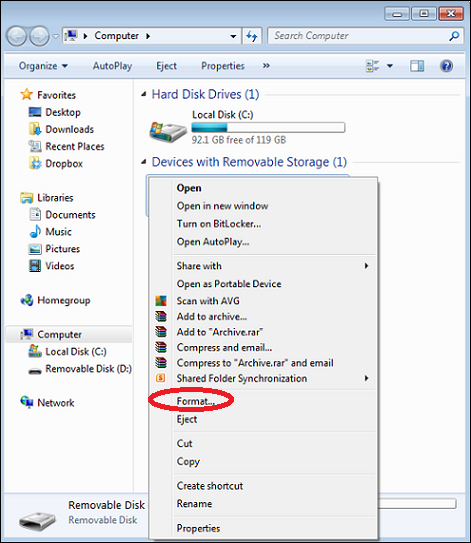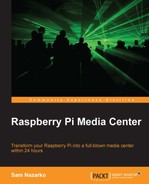In this chapter, we will take a look at:
- How we can add our existing content to Raspbmc for playback
- The different types of backends that Raspbmc supports
- How to add these as sources and manage them as well as best practices
A backend is a source that XBMC can play content from.
Raspbmc supports playback of both music and video content from the following source types (this does not cover all of them):
- USB drives
- SD card content
- HTTP: Playing back content over a standard web protocol
- FTP
- SMB: Windows and Linux shares
- NFS: The network filesystem, typically used in Unix
- AFP: Apple Filing Protocol (AFP) is typically used for sharing content across the network from Mac OS X systems
- UPnP/DLNA: Allows streaming from capable sources, such as UPNP streaming software on laptops
- AirPlay: This entails enabling the option Allow XBMC to receive AirPlay content by navigating to System | Settings | Network
We'll only look at setting up play back from a USB device for now, as we'll explore configuring network sources for streaming later.
Raspbmc supports USB drive support out of the box, allowing you to plug in a USB drive and be able to play back any supported media files that are on the device. This compatibility is dependent on the hard drive being formatted with one of the following filesystems:
- Ext2, Ext3, and Ext4 filesystems (typically found on Linux systems)
- HFS and HFS+ (typically found on Mac OS X systems)
- NTFS, FAT32, and exFAT (typically found on Windows systems)
Note
When using a Windows filesystem there are some limitations to consider. When using FAT32, filesystems cannot exceed a file size of 4 GB. It is recommended to use the exFAT filesystem instead of NTFS on USB sticks as there will be no permission issues. Note that Windows XP requires KB955704 for exFAT support.
We will now look at formatting a USB drive as exFAT under Windows:
- Inarguably, exFAT is the best choice of filesystem if you are planning to connect your USB drive to your Windows PC and your Raspberry Pi regularly.
- On Windows, we need to locate the drive. This can either be done under Explorer or Computer.
- Right-click on the USB drive and click on Format as shown in the following screenshot:

- Now, ensure that you select the exFAT filesystem and Quick Format for format speed, as shown in the following screenshot:

- Click on Format.
- When the process is complete, a dialog box will appear. You can now close the format window.
- Your drive is now usable for Raspbmc. You can save files using Windows Explorer just as you would with any other drive.
I have not covered formatting a USB drive under Mac OS X or Linux as the filesystems are less limited for these platforms and do not suffer from caveats to the extent that the ones available to Microsoft Windows users do.
